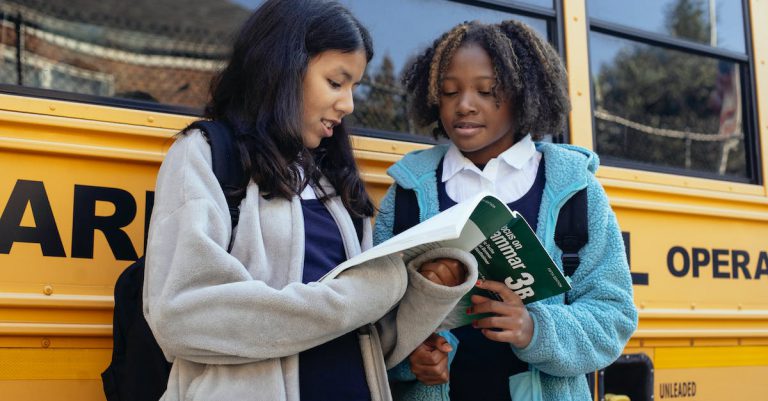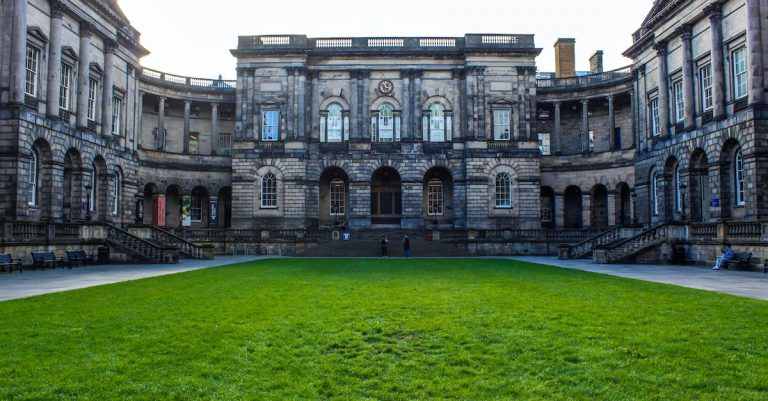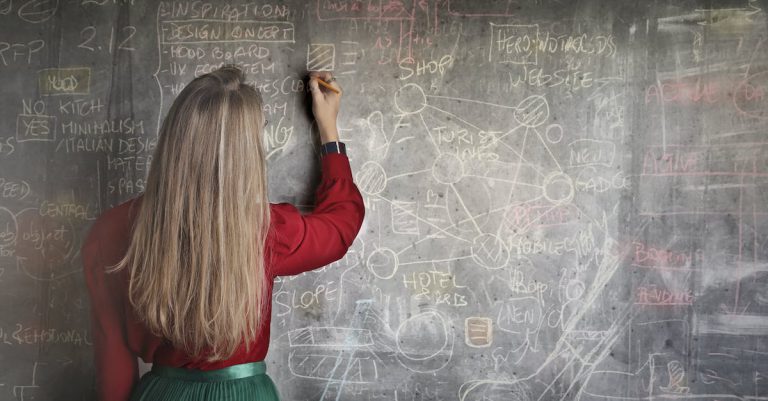Schools have been an integral part of human society for centuries, shaping and educating generations of people.
If you’re wondering about the origins of schools and their purpose, here’s a quick answer to your question: Schools were created to educate and prepare individuals for life, work, and citizenship.
In this article, we’ll take a closer look at the history of schools, their evolution over time, and the reasons why education has become such an important aspect of our lives.
The Early History of Schools
Schools have been around for thousands of years, but the idea of organized education has evolved over time. Here’s a look at the early history of schools.
The First Schools in Ancient Civilizations
The first schools were established in ancient civilizations such as Egypt, Greece, and Rome. In Egypt, children were taught reading, writing, and math. In Greece, boys were taught by private tutors until the age of seven, when they went to school to learn subjects such as music, literature, and athletics. In Rome, schools were divided into two types: one for boys who were taught by a grammaticus, and the other for older boys who were taught by a rhetor.
These early schools were primarily for the elite and wealthy. Education was not available to everyone, and it was not until much later that schools became more widely accessible.
The Role of Religion in Early Education
Religion played a significant role in early education. In ancient civilizations, religious leaders were often the only ones who were literate, and they would teach children to read and write. In the Middle Ages, the Catholic Church played a major role in education. Monasteries and convents were centers of learning, and monks and nuns were responsible for teaching children.
During the Renaissance, humanist education emerged, which focused on the study of classical texts and the principles of ancient Greek and Roman education. This type of education was often provided by private tutors and was only available to the wealthy.
The Development of Universities in the Middle Ages
The first universities were established in the Middle Ages, with the University of Bologna being the oldest, founded in 1088. These universities were primarily for the study of law, medicine, and theology, and were only available to men.
It wasn’t until the 19th century that universities began to offer a wider range of subjects and became more accessible to women. Today, universities and colleges are an integral part of modern education, providing a wide range of courses and degrees to students around the world.
The Evolution of Modern Schools
Schools have been around for centuries, but the modern school system as we know it today is a relatively recent development. Before the 19th century, education was largely a private affair, with wealthy families hiring tutors to educate their children. But as society changed, so did the way we educate our children.
The impact of the Industrial Revolution on education
The Industrial Revolution brought about significant changes in society, including the need for a more educated workforce. With the rise of factories and other industries, there was a growing demand for skilled workers who could read, write, and do basic math. As a result, schools began to shift from being a privilege of the wealthy to being a necessity for all.
The first public schools were established in the 19th century, with the goal of providing education to all children, regardless of their social or economic background. These schools were supported by taxes and were free for all students to attend. This was a major step forward in making education accessible to all, and it laid the foundation for the modern public education system.
The development of public education systems
The development of public education systems was a gradual process that took place over many years. In the United States, for example, the first public school was established in Boston in 1635. However, it wasn’t until the mid-19th century that public schools became widespread.
The public education system has continued to evolve over time, with changes in curriculum, teaching methods, and technology. Today, public schools in the United States are governed by state and local governments and are required to follow certain standards set by the federal government.
The rise of private schools and alternative education
While public schools are the norm in many countries, there are also a variety of private schools and alternative education options available. Private schools are funded by tuition and may offer a different curriculum or teaching approach than public schools. Alternative education options, such as homeschooling or online schools, also provide parents with more flexibility and control over their child’s education.
Despite the availability of private schools and alternative education options, public schools remain the primary choice for most families. According to the National Center for Education Statistics, approximately 90% of American students attend public schools.
| Public Schools | Private Schools | Alternative Education | |
|---|---|---|---|
| Cost | Free | Tuition | Varies |
| Curriculum | Set by government | Varies by school | Varies |
| Teaching Approach | Varies by school | Varies by school | Varies |
The Purpose of Schools Today
Schools have been around for centuries, but their purpose has evolved over time. Today, schools serve a variety of functions, from preparing students for the workforce to promoting civic engagement and global awareness. In this article, we will explore the different purposes of schools today.
Preparing students for the workforce
One of the primary purposes of schools today is to prepare students for the workforce. This means providing them with the skills and knowledge they need to succeed in their chosen careers. Schools do this by offering a wide range of courses and programs that teach students everything from basic reading and writing skills to advanced mathematics and science. They also provide opportunities for students to gain practical experience through internships, co-op programs, and other work-based learning experiences.
According to a recent report by the National Center for Education Statistics, about 60 percent of students in the United States go on to pursue some form of higher education after high school. This underscores the importance of schools in preparing students for the workforce and helping them achieve their career goals.
Fostering personal and social development
Another important purpose of schools today is to foster personal and social development. This means helping students develop the skills and qualities they need to succeed in life, such as critical thinking, problem-solving, communication, and teamwork. Schools do this by offering a variety of extracurricular activities, such as sports, clubs, and volunteer opportunities, that allow students to explore their interests and develop new skills.
In addition, schools provide a safe and supportive environment where students can learn and grow. They offer counseling and mental health services to help students cope with the challenges of adolescence and provide a sense of community and belonging that is essential for personal and social development.
Promoting civic engagement and global awareness
Finally, schools today have an important role to play in promoting civic engagement and global awareness. This means helping students understand their responsibilities as citizens of their local communities and the world at large. Schools do this by offering courses in civics and government, encouraging community service and volunteerism, and promoting global learning and cultural exchange.
According to a recent survey by the National Association of Independent Schools, more than 90 percent of independent school graduates reported that their education had prepared them well for civic engagement and social responsibility. This underscores the importance of schools in promoting civic engagement and global awareness and preparing students to be active and engaged members of society.
Challenges Facing Schools
Schools are institutions that have been around for centuries. While the purpose of schools has remained largely the same, the challenges they face have evolved over time. In this article, we will explore three key challenges facing schools today: funding and resource disparities, the impact of technology on education, and preparing students for an uncertain future.
Funding and resource disparities
Funding and resource disparities are among the most significant challenges facing schools today. Schools in low-income areas often lack the resources and funding needed to provide a quality education for their students. This can lead to a wide range of issues, including overcrowded classrooms, outdated textbooks and technology, and a lack of extracurricular activities.
To address this issue, many schools are turning to innovative solutions such as crowdfunding, partnerships with local businesses, and grant programs. These efforts are helping to level the playing field and ensure that all students have access to the resources they need to succeed.
The impact of technology on education
The impact of technology on education is another major challenge facing schools today. While technology has the potential to revolutionize education and provide new opportunities for students, it also presents a range of challenges. Many teachers struggle to keep up with the latest technology, and there is a risk that technology could replace traditional teaching methods.
Despite these challenges, many schools are embracing technology and using it to enhance their teaching methods. For example, some schools are using virtual reality to bring history lessons to life, while others are using online platforms to provide personalized learning experiences for their students.
Preparing students for an uncertain future
Preparing students for an uncertain future is perhaps the most pressing challenge facing schools today. With rapid technological advancements and economic changes, it is difficult to predict what the job market will look like in the years to come. Schools must prepare students for a future that is constantly evolving and changing.
To address this challenge, many schools are focusing on teaching students critical thinking and problem-solving skills. They are also placing a greater emphasis on science, technology, engineering, and math (STEM) education, as these areas are expected to be in high demand in the future job market.
Conclusion
In conclusion, schools have a rich history and have evolved over time to meet the changing needs of society and individuals.
While challenges continue to exist, education remains a critical component of personal and societal growth and development.
By understanding the origins of schools and their purpose, we can continue to strive for better educational opportunities for all.






